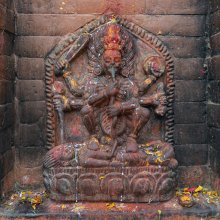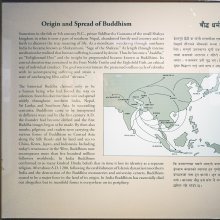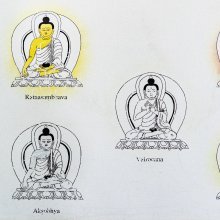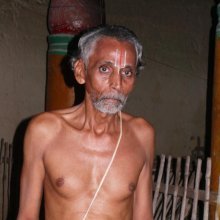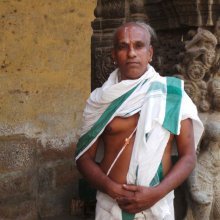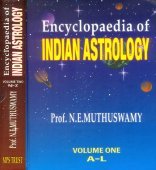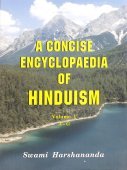Dakshina, Dakṣiṇa, Dakṣiṇā, Dākṣiṇa: 36 definitions
Introduction:
Dakshina means something in Buddhism, Pali, Hinduism, Sanskrit, the history of ancient India, Marathi, Hindi. If you want to know the exact meaning, history, etymology or English translation of this term then check out the descriptions on this page. Add your comment or reference to a book if you want to contribute to this summary article.
The Sanskrit terms Dakṣiṇa and Dakṣiṇā and Dākṣiṇa can be transliterated into English as Daksina or Dakshina, using the IAST transliteration scheme (?).
Alternative spellings of this word include Dakshin.
Images (photo gallery)
In Hinduism
Shilpashastra (iconography)
Source: Wisdom Library: Śilpa-śāstraDakṣiṇā (दक्षिणा):—In Hindu iconology (śilpaśāstra), this represents one of the three faces of Agni. The three faces symoblize the three Vedic fires. Agni is one of the most important Vedic gods and represents divine illumination
Source: Wisdom Library: Śilpa-śāstraDakṣiṇa (दक्षिण) is a Sanskrit name referring to one of the eight manifestations of Bhīṣaṇa, who is a form of Bhairava. According to the Rudrayāmala, there are eight main forms of Bhairava who control the eight directions of this universe. Each form (e.g., Bhīṣaṇa) has a further eight sub-manifestations (e.g., Dakṣiṇa), thus resulting in a total of 64 Bhairavas.
When depicting Dakṣiṇa according to traditional iconographic rules (śilpaśāstra), one should depcit him (and other forms of Bhīṣaṇa) having a yellow color and should carry in his hands the kuṇḍa, the kheṭaka, the parigha (a kind of club) and bhiṇḍipāla. The word Śilpaśāstra refers to an ancient Hindu science of arts and crafts, dealing with subjects such as painting, sculpture and iconography.
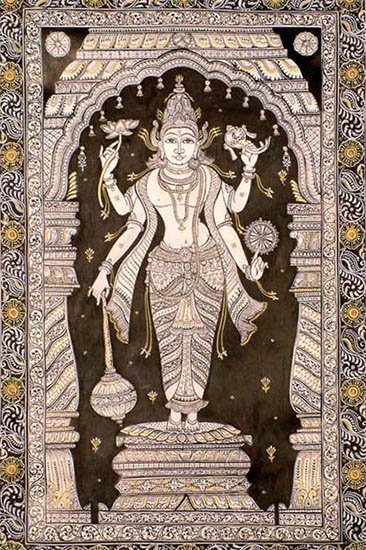
Shilpashastra (शिल्पशास्त्र, śilpaśāstra) represents the ancient Indian science (shastra) of creative arts (shilpa) such as sculpture, iconography and painting. Closely related to Vastushastra (architecture), they often share the same literature.
Vaishnavism (Vaishava dharma)
Source: ISKCON Press: Glossary1) Dakṣiṇā (दक्षिणा).—A disciple's gift to his spiritual master upon initiation, collected by begging and given as a token of gratitude.
2)Dakṣiṇā (दक्षिणा).—Right-wing group of gopīs, who cannot tolerate womanly anger.
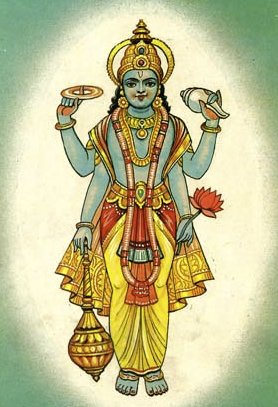
Vaishnava (वैष्णव, vaiṣṇava) or vaishnavism (vaiṣṇavism) represents a tradition of Hinduism worshipping Vishnu as the supreme Lord. Similar to the Shaktism and Shaivism traditions, Vaishnavism also developed as an individual movement, famous for its exposition of the dashavatara (‘ten avatars of Vishnu’).
Purana and Itihasa (epic history)
Source: archive.org: Puranic EncyclopediaDakṣiṇā (दक्षिणा).—A daughter, born to Prajāpati Ruci, by his wife Ākūti. The first Manu was Svāyambhuva, the son of Brahmā. He accepted Śatarūpā, his sister who became sinless by penance, as his wife. Śatarūpā gave birth to two sons Priyavrata and Uttānapāda, and two daughters, Prasūti and Ākūti. Of these two daughters, Prasūtī was given to Prajāpati Dakṣa and Ākūti to Prajāpati Ruci. Ākūti gave birth to twins, a son named Yajña and a daughter named Dakṣiṇā. To Yajña twelve sons were born by Dakṣiṇā. They were a class of devas (gods) called the Yāmas in the regime of Manu Svāyambhuva (Viṣṇu Purāṇa, Aṃśa 1, Chapter 7). Now Dakṣiṇā is worshipped as a goddess. The same Dakṣiṇā was reborn in the Goloka under the name Suśīlā. At that time she was a cowherd woman and friend of Rādhā. She liked to talk with Śrī Kṛṣṇa. One day Rādhā saw her sitting in the lap of Śrī Kṛṣṇa, engaged in sexual sports, in a secluded place. When Suśīlā saw that Rādhā had found them out, she became dumbfounded with shame, and sat with bowed head. Śrī Kṛṣṇa slowly placed Suśīlā devi down and instantly vanished. The angry Rādhā cursed Suśīlā to become ashes if ever she entered the Goloka again. Then Rādhā ran about everywhere in search of Śrī Kṛṣṇa, but he could not be found. (See full article at Story of Dakṣiṇā from the Puranic encyclopaedia by Vettam Mani)
Source: archive.org: Shiva Purana - English TranslationDakṣiṇā (दक्षिणा) refers to “offering the sacrificial fee” and is mentioned in the Śivapurāṇa 1.20, while explaining the mode of worshipping an earthen phallic image (pārthiva-liṅga) according to the Vedic rites:—“[...] the scholarly devotee shall offer sacrificial fee (Dakṣiṇā) with the three mantras beginning with ‘Hiraṇya-garbha’ etc. and shall perform ablution (Abhiṣeka) with the mantra ‘Devasya tvā’ etc.”.
Source: Cologne Digital Sanskrit Dictionaries: The Purana Index1) Dakṣiṇa (दक्षिण).—Generally the southern people.*
- * Viṣṇu-purāṇa II. 3. 16.
2a) Dakṣiṇā (दक्षिणा).—As sister and wife of Yajña and mother of 12 Yāmā gods.*
- * Viṣṇu-purāṇa I. 7. 21.
2b) A daughter of Ruci and Ākūtī; consort of Suyajña, an avatār of Hari. Had twelve sons who were known as Tuṣita gods (Yāmas) of the period of Svāyambhuva Manu.*
- * Bhāgavata-purāṇa II. 7. 2; IV. 1. 5-8; Brahmāṇḍa-purāṇa II. 9. 44.

The Purana (पुराण, purāṇas) refers to Sanskrit literature preserving ancient India’s vast cultural history, including historical legends, religious ceremonies, various arts and sciences. The eighteen mahapuranas total over 400,000 shlokas (metrical couplets) and date to at least several centuries BCE.
Natyashastra (theatrics and dramaturgy)
Source: Wisdom Library: Nāṭya-śāstra1) Dakṣiṇa (दक्षिण).—In the “extraneous representation” (āhāryābhinaya) of dramatic plays, the women of the South (dakṣiṇa) are to have Ullekhya with Kumbhīpadaka, and Āvarta on the forehead, according to Nāṭyaśāstra chapter 23.
2) Dakṣiṇa (दक्षिण, “southern”) refers to the “inhabitants from the south”, who are usually to be represented by a brown (asita) color when painting the limbs (aṅgaracanā), according to Nāṭyaśāstra chapter 23. The painting is a component of nepathya (costumes and make-up) and is to be done in accordance with the science of āhāryābhinaya (extraneous representation).
3) Dakṣiṇa (दक्षिण, “dexterous”) refers to one of the three types of gativṛtti (styles of procedure), according to the Nāṭyaśāstra chapter 29. Gativṛtti gives quality to give quality to the instrumental music and songs and is influenced by tāla (time-measure), laya (tempo), gīti (rhythm), yati and grahamārga (way of beginning).
According to the Nāṭyaśāstra, “in the dakṣiṇa, the gīti is Pṛthulā, the unit of time-measure is of four kalās, the tempo (laya) is slow (vilambita), the yati is Gopucchā and the Atīta graha-mārgas are preponderant”.
Source: Shodhganga: The significance of the mūla-beras (natya)Dakṣiṇa (दक्षिण) refers to a “hero who has several wives and treats each one equally without partiality” and represents one of the four kinds of “heroes” (nāyaka) in a dramatic representation, according to the Abhinaya-sara-samputa, as used within the classical tradition of Indian dance and performance, also known as Bharatanatyam.—In the depiction of any mood or sentiment, a dance performance or a dramatic representation takes the medium of the hero (nāyaka) and the heroine (nāyikas). The heroes are again classified on the basis of their erotic sentiments into four types [viz., Dakṣiṇa].
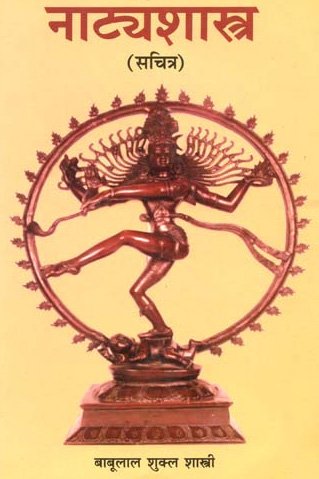
Natyashastra (नाट्यशास्त्र, nāṭyaśāstra) refers to both the ancient Indian tradition (shastra) of performing arts, (natya—theatrics, drama, dance, music), as well as the name of a Sanskrit work dealing with these subjects. It also teaches the rules for composing Dramatic plays (nataka), construction and performance of Theater, and Poetic works (kavya).
Shaivism (Shaiva philosophy)
Source: Shodhganga: Iconographical representations of Śiva1) Dakṣiṇā (दक्षिणा) or Dakṣiṇāmūrti refers to one of the twenty-three forms (mūrti) of Śiva mentioned in the Pūrvakāmikāgama (pratimālakṣaṇavidhi-paṭala): first and foremost among the Mūlāgama. The forms of Śiva (e.g., Dakṣiṇā) are established through a process known as Sādākhya, described as a five-fold process of creation.
2) Dakṣiṇā is also listed among the twenty-eighth forms (mūrti) of Śiva mentioned in the Vātulāgama: twenty-eighth among the Siddhāntaśaivāgama.
3) Dakṣiṇā is also listed among the eighteen forms (mūrti) of Śiva mentioned in the Kāraṇāgama (pratimālakṣaṇavidhi-paṭala): the fourth among the Siddhāntaśaivāgamas.
4) Dakṣiṇā is also listed among the ten forms (mūrti) of Śiva mentioned in the Ajitāgama (under the Raudrarūpa heading): the fifth among the Siddhāntaśaivāgamas.
5) Dakṣiṇā is also listed among the sixteen forms (mūrti) of Śiva mentioned in the Dīptāgama: the sixth among the Siddhāntaśaivāgamas.
6) Dakṣiṇā is also listed among the eighteen forms (mūrti) of Śiva mentioned in the Śilparatna (twenty-second adhyāya): a technical treatise by Śrīkumāra on Śilpaśāstra.
Source: Brill: Śaivism and the Tantric TraditionsDakṣiṇa (दक्षिण) refers to the “right (hand)”, according to the Guhyasūtra chapter 9.—Accordingly, “[...] [The Lord spoke]:—[...] On one half, there should be a forehead mark; on one half a [forehead] eye. A ring [should be] in one ear; a [pendant] ear-ornament in one ear. He should put a trident in his right hand (dakṣiṇa-hasta) and a breast on his left side, a girdle on the left half, a bangle on the left arm, a woman’s anklet on the left leg, a man’s anklet on the right leg and a muñja-grass belt. At the hips, he should put a loin-cloth on the right and wear a woman’s garment on the left.”.

Shaiva (शैव, śaiva) or Shaivism (śaivism) represents a tradition of Hinduism worshiping Shiva as the supreme being. Closely related to Shaktism, Shaiva literature includes a range of scriptures, including Tantras, while the root of this tradition may be traced back to the ancient Vedas.
Ganapatya (worship of Ganesha)
Source: Google Books: Ganapati: Song of the SelfDakṣiṇā (दक्षिणा) refers to “fruit”, representing one of the possible preliminary rites (upacāra) of a pūjā (deity worship).—Each act in a pūjā is not only physical and/or mental, but also symbolic, cosmic, and spiritual. Sprinkling, sipping, and bathing are symbolic of purification, of the worshipped as well as of the worshipper and the surroundings. Various offerings [viz., dakṣiṇā] symbolize the surrendering of one’s latent tendencies (vāsanā) as expressed in thoughts, words, and deeds.
Ganapatya (गाणपत्य, gāṇapatya) represents a tradition of Hinduism where Ganesha is revered and worshipped as the prime deity (ishta-devata). Being a minor though influential movement, Ganapatya evovled, llike Shaktism and Shaivism, as a separate movement leaving behind a large body of literature.
Shaktism (Shakta philosophy)
Source: Google Books: ManthanabhairavatantramDakṣiṇa (दक्षिण) refers to the “southern path”, according to the Ṣaṭsāhasrasaṃhitā, an expansion of the Kubjikāmatatantra: the earliest popular and most authoritative Tantra of the Kubjikā cult.—Accordingly, “The southern one consists of the sixteen vowels. In this way (how the Pure Wheel consists of) sixteen vowels (distributed) in the groups of four, five, and six has been explained in terms of the four sacred seats. Thus, (there are) four vowels in the four sacred seats, (the next) five vowels are in the four sacred seats and in space (ākāśa), the (following) six vowels are in the four sacred seats, in space and in the middle. Thus there are fifteen vowels. Here (in this case) the letter is pervasive and completes (the set of sixteen). This is the description of the vowels in terms of the southern path. [...]”.

Shakta (शाक्त, śākta) or Shaktism (śāktism) represents a tradition of Hinduism where the Goddess (Devi) is revered and worshipped. Shakta literature includes a range of scriptures, including various Agamas and Tantras, although its roots may be traced back to the Vedas.
Dharmashastra (religious law)
Source: Oxford Academic: Homo Ritualis: Hindu Ritual and Its Significance to Ritual TheoryDakṣiṇā (दक्षिणा) refers to “sacrificial payment”, and represents one of the traditional marriage rituals, according to Dadhirāma Marāsini’s 19th century Vivāhapaddhati (part of his Karmakāṇḍabhāskara) which is based on the Pāraskara-Gṛhyasūtra, a domestic manual in the Mādhyandina school of the Vājasaneyisaṃhitā.—If performed traditionally, high caste marriages among the Parbatiyas (Parbates/Paharis/Pahadis) or Indo-Nepalese people in Nepal are normally executed by following the course of events as presented in marriage manuals. The Dakṣiṇā rite is mentioned under the header called Concluding rites (homa, etc.).
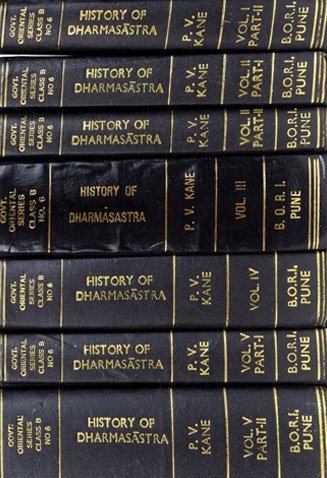
Dharmashastra (धर्मशास्त्र, dharmaśāstra) contains the instructions (shastra) regarding religious conduct of livelihood (dharma), ceremonies, jurisprudence (study of law) and more. It is categorized as smriti, an important and authoritative selection of books dealing with the Hindu lifestyle.
Vastushastra (architecture)
Source: Google Books: Consecration Rituals In South AsiaDakṣiṇā (दक्षिणा) refers to one of the chapters of the Devyāmata: an Early Śaiva Pratiṣṭhātantra dating back to the 5th century CE dealing with topics related to temple construction, consecration rituals, and iconography.—The Devyāmata is written in the form of a dialogue between Śiva and the Goddess. It begins with the praśnapaṭala, ‘the chapter on questions’, in which Devī tells Śiva what topics she would like to learn about. The answers are provided in the following chapters [e.g., dakṣiṇā], of which each is dedicated to one specific subject.
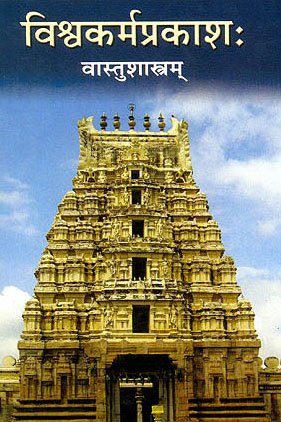
Vastushastra (वास्तुशास्त्र, vāstuśāstra) refers to the ancient Indian science (shastra) of architecture (vastu), dealing with topics such architecture, sculpture, town-building, fort building and various other constructions. Vastu also deals with the philosophy of the architectural relation with the cosmic universe.
General definition (in Hinduism)
Source: Leiden Repository: Chapter 6 The function and meaning of the garbhanyāsaTe Sanskrit word dakṣiṇa may mean either‘south’ or ‘right’.
Source: ACHC: Smarta PujaDakṣiṇa (दक्षिण) refers to the “offering of a gift”, representing one of the various services (upacāra) of a pūjā (ritualistic worship of a deity) which aim at the purification of the devotee.—A gift (dakṣiṇa) of money is offered to the deity on two betel leaves and a little water is sprinkled on it to indicate that it has been offered. After completion of the worship the performer of the pūjā takes the gift of money along with the left-overs, like areca-nuts, fruits etc.
The Pauranic mantra recited here praises the gift of gold. Gold is mythologically said to be the semen of fire. Silver, being produced from the tears of fire is stated as disqualified for a religious gift. Gold is a symbol of the sun, of immortality and purity while silver that of tears and death. Several texts prescribe a golden flower as dakṣinā.
In Buddhism
Mahayana (major branch of Buddhism)
Source: Wisdom Library: Maha Prajnaparamita Sastra1) Dakṣiṇa (दक्षिण, “south”) represents one of the “ten directions” (diś in Sanskrit or disā in Pali) according to an appendix included in the 2nd century Mahāprajñāpāramitāśāstra (chapter XIV). Dakṣiṇā is a Sanskrit word which is known in Pali as dakkhiṇā in Tibetan as lho and in Chinese as nan.
2) Dakṣiṇā (दक्षिणा) refers to “pious offerings”, according to chapter L.—Accordingly, “the Bodhisattva wishes ‘to purify great offerings (dakṣiṇā)’. Some say: The Bodhisattva collects much merit (puṇya) but does not eliminate his afflictive emotions (kleśa); that is why, by accepting the pious offerings (dakṣiṇā) of people, he does not purify them.—But the Buddha has said that for the Bodhisattva who is practicing the perfection of wisdom, all dharmas are empty (śūnya) and non-existent (anupalabdha) and all the more so the fetters (saṃyojana). Once having entered into the fundamental element (dharmadhātu), the Bodhisattva does not realize the limit of the truth: this is why he is able to purify the gifts made to him”.
Notes: The Bodhisattva purifies the offerings (dakṣiṇā) made to him by accepting them and consuming them: thus he increases the merit (puṇya) of the donor. The merit of the gift is of two kinds: i) the merit produced by abandonment (tyāgānvaya), merit resulting from the mere fact of abandoning; ii) the merit produced by enjoyment (paribhogānvaya), merit resulting from the enjoyment by the person who receives, of the object given (cf. Kośabhāṣyā). [...] The Bodhisattva wants to accept the great offerings (dakṣiṇā) made to him not out of personal interest but to increase the merit of his benefactors.
Source: academia.edu: A Study and Translation of the GaganagañjaparipṛcchāDakṣiṇa (दक्षिण) refers to the “way of right side”, according to the Gaganagañjaparipṛcchā: the eighth chapter of the Mahāsaṃnipāta (a collection of Mahāyāna Buddhist Sūtras).—Accordingly, as Bodhisattva Gaganagañja explains to Bodhisattva Ratnaśrī what kind of concentration should be purified: “[...] (7) [when the Bodhisattvas attain] the concentration called ‘Suppression’, all vices will be conquered; (8) [when the Bodhisattvas attain] the concentration called ‘Turning,’ the way of right side (dakṣiṇa) will be fulfilled. (9) [when the Bodhisattvas attain] the concentration called ‘Returning,’ they will turn back from rationalistic heresy; [...]”.

Mahayana (महायान, mahāyāna) is a major branch of Buddhism focusing on the path of a Bodhisattva (spiritual aspirants/ enlightened beings). Extant literature is vast and primarely composed in the Sanskrit language. There are many sūtras of which some of the earliest are the various Prajñāpāramitā sūtras.
Tibetan Buddhism (Vajrayana or tantric Buddhism)
Source: Brill: Śaivism and the Tantric Traditions (tantric Buddhism)Dakṣiṇa (दक्षिण) refers to the “south” (i.e., ‘the southern direction’), according to the Nāmamantrārthāvalokinī by Vilāsavajra, which is a commentary on the Nāmasaṃgīti.—Accordingly, [while describing Ādibuddha]—“[...] [The Ādibuddha] has five faces. [...] [His five faces] have five [different] colours: dark blue for the east [and forward-facing face], yellow for the south (dakṣiṇa—dakṣiṇena pītaṃ), red for the west, [and] green for the north. On the top, he has a white face, the face of [the deity] Paramāśva. [...]”.
Source: OSU Press: Cakrasamvara SamadhiDakṣiṇa (दक्षिण) refers to the “southern direction” (or bank of a river) [i.e., vāgamatyāḥ dakṣiṇa-digbhāge], according to the Guru Mandala Worship (maṇḍalārcana) ritual often performed in combination with the Cakrasaṃvara Samādhi, which refers to the primary pūjā and sādhanā practice of Newah Mahāyāna-Vajrayāna Buddhists in Nepal.

Tibetan Buddhism includes schools such as Nyingma, Kadampa, Kagyu and Gelug. Their primary canon of literature is divided in two broad categories: The Kangyur, which consists of Buddha’s words, and the Tengyur, which includes commentaries from various sources. Esotericism and tantra techniques (vajrayāna) are collected indepently.
India history and geography
Source: archive.org: Nilamata Purana: a cultural and literary study (history)Dakṣiṇā (दक्षिणा) is a word referring to gifts given to Brāhmaṇas, as mentioned in the Nīlamatapurāṇa.—The Brāhmaṇas as the recipients of gifts have been mentioned frequently in the Nīlamata. The Nīlamata emphasises the virtue of the gifts given to the Brāhmaṇas. The terms used for such a gift are Dāna, Dakṣiṇā, and Pratigraha. The nature of the gifts varies with religious ceremonies performed in different seasons of the year.
Source: Cologne Digital Sanskrit Dictionaries: Indian Epigraphical GlossaryDakṣiṇa.—(EI 32), the sacred fire. Note: dakṣiṇa is defined in the “Indian epigraphical glossary” as it can be found on ancient inscriptions commonly written in Sanskrit, Prakrit or Dravidian languages.
--- OR ---
Dakṣiṇā.—(EI 32), perquisite. (BL), a present or gift to a Brāhmaṇa for a service. (CII 1), cf. prāṇa-dakṣinā, same as prāṇa-dāna. Note: dakṣiṇā is defined in the “Indian epigraphical glossary” as it can be found on ancient inscriptions commonly written in Sanskrit, Prakrit or Dravidian languages.

The history of India traces the identification of countries, villages, towns and other regions of India, as well as mythology, zoology, royal dynasties, rulers, tribes, local festivities and traditions and regional languages. Ancient India enjoyed religious freedom and encourages the path of Dharma, a concept common to Buddhism, Hinduism, and Jainism.
Languages of India and abroad
Marathi-English dictionary
Source: DDSA: The Molesworth Marathi and English Dictionarydakṣiṇa (दक्षिण).—a (S) Right, not left. 2 Southern. 3 fig. Clever, adroit, dexterous.
--- OR ---
dakṣiṇa (दक्षिण).—f (S) The south wind. da0 bādhaṇēṃ in. con. To be scorching or blasting unto (unto Betelnut-trees especially)--the sun in his southerly declination. dakṣiṇēcā divā A term for a person that disgraces his family. (Because a lamp hung with the wick towards the south brings ill luck.)
--- OR ---
dakṣiṇā (दक्षिणा).—f (S) Money or presents given to Brahmans or young virgins upon occasions. Pr. bhāta bhakṣaṇā pōḷī da0. 2 The south. 3 S The completion of any rite.
Source: DDSA: The Aryabhusan school dictionary, Marathi-Englishdakṣiṇa (दक्षिण).—a Right, not left. Southern. Fig. clever, dexterous. f The south wind; the south wind;.
--- OR ---
dakṣiṇā (दक्षिणा).—f Money given to Brah- mans.
Marathi is an Indo-European language having over 70 million native speakers people in (predominantly) Maharashtra India. Marathi, like many other Indo-Aryan languages, evolved from early forms of Prakrit, which itself is a subset of Sanskrit, one of the most ancient languages of the world.
Sanskrit dictionary
Source: DDSA: The practical Sanskrit-English dictionaryDakṣiṇa (दक्षिण).—a. [dakṣ-inan Uṇ 2.5.]
1) Able, skilful, dexterous, competent, clever; इत्यम्बरीषं नाभागिमन्वमोदन्त दक्षिणाः (ityambarīṣaṃ nābhāgimanvamodanta dakṣiṇāḥ) Mahābhārata (Bombay) 12.29.12.
2) Right (opp. vāma).
3) Situated on the right side. दक्षिणं परि, दक्षिणं कृ (dakṣiṇaṃ pari, dakṣiṇaṃ kṛ) to place any one on the right side as a mark of respect; ग्रहर्क्षताराः परियन्ति दक्षिणम् (graharkṣatārāḥ pariyanti dakṣiṇam) Bhāgavata 4.12.25.
4) South, southern; as in दक्षिणवायु, दक्षिणदिक् (dakṣiṇavāyu, dakṣiṇadik); आददे नातिशीतोष्णो नभस्वानिव दक्षिणः (ādade nātiśītoṣṇo nabhasvāniva dakṣiṇaḥ) R. 4.8.
5) Situated to the south.
6) Sincere, straightforward, honest, impartial.
7) Pleasing, amiable.
8) Courteous, civil.
9) Compliant, submissive.
1) Dependent.
11) Favourable; 'दक्षिणः सरलावामपरच्छन्दानुवर्तिषु (dakṣiṇaḥ saralāvāmaparacchandānuvartiṣu)' इति विश्वः (iti viśvaḥ); Kirātārjunīya 18.27.
-ṇaḥ 1 The right hand or arm.
2) A civil or courteous person, applied in poetic compositions to a lover who professes attachment to one mistress, while his heart has been entirely taken up by another.
3) An epithet of Śiva or Viṣṇu.
4) The right-hand horse of a carriage; इन्द्रस्येव दक्षिणः श्रियैधि (indrasyeva dakṣiṇaḥ śriyaidhi) Vāj.9.8.
5) The southern sacred fire.
-ṇaḥ, ṇam 1 The right side.
2) The south; Nala.9.23.
3) The Deccan.
-ṇam The highest doctrine of the Śāktas
--- OR ---
Dakṣiṇā (दक्षिणा).—ind.
1) On the right or south of.
2) In the southern direction (with abl.)
-ṇā 1 A present or gift to Brāhmaṇas (at the completion of a religious rite, such as a sacrifice).
2) Dakṣiṇā regarded as a daughter of Prajāpati and as the wife of Sacrifice personified; पत्नी सुदक्षिणेत्यासीदध्वरस्येव दक्षिणा (patnī sudakṣiṇetyāsīdadhvarasyeva dakṣiṇā) R.1.31.
3) A gift, offering or donation in general, fee, remuneration; प्राणदक्षिणा, गुरुदक्षिणा (prāṇadakṣiṇā, gurudakṣiṇā) &c.; cf. also दक्षिणाशब्दश्च परिक्रयार्थो भवति (dakṣiṇāśabdaśca parikrayārtho bhavati) ŚB. on Manusmṛti 1.2.38; परिक्रयार्थे हि दक्षिणा- शब्दो भवति (parikrayārthe hi dakṣiṇā- śabdo bhavati) ŚB. on MS.1.2.48. Etymologically दक्षिणा (dakṣiṇā) is so called because it imparts power or strength to the receiver; दक्षकरणी हि दक्षिणा । दक्षश्च बलम् (dakṣakaraṇī hi dakṣiṇā | dakṣaśca balam) ŚB. on MS. 1.3.45; दक्षिणा नाम दक्षतेरुत्साहकर्मणः । दक्षिणा उत्साहिका इति (dakṣiṇā nāma dakṣaterutsāhakarmaṇaḥ | dakṣiṇā utsāhikā iti) | ŚB. on MS.1.3.57.
4) A good milch-cow, prolific cow.
5) The south.
6) The southern country, the Deccan.
7) Fame.
8) A kind of heroine thus defined:-- या गौरवं भयं प्रेम सद्भावं पूर्वनायके । न मुञ्चत्यन्यसक्तापि सा ज्ञेया दक्षिणा बुधैः (yā gauravaṃ bhayaṃ prema sadbhāvaṃ pūrvanāyake | na muñcatyanyasaktāpi sā jñeyā dakṣiṇā budhaiḥ) ||.
9) Completion of any rite.
--- OR ---
Dākṣiṇa (दाक्षिण).—a. (-ṇī f.) [दक्षिणा प्रयोजनमस्य-अण् (dakṣiṇā prayojanamasya-aṇ)]
1) Relating to a sacrificial gift or to a gift in general.
2) Relating to the south.
-ṇā The southern country i. e. the Deccan.
-ṇam A collection of sacrificial gifts.
Source: Cologne Digital Sanskrit Dictionaries: Shabda-Sagara Sanskrit-English DictionaryDakṣiṇa (दक्षिण).—mfn.
(-ṇaḥ-ṇā-ṇaṃ) 1. Candid, sincere, honest, upright. 2. Right, (not left.) 3. South, southern. 4. Dependent, subject. 5. Clever, able, dexterous. f.
(-ṇā) 1. A present to Brahmans, upon solemn or sacrificial occasions. 2. The south. 3. Completion of any rite, fixing or establishing any act or place. 4. A form or figure of Durga, in which the right side is said to be advanced. 5. Donation to Brahmans, personified as a goddess, said to be born from Krishna'S right side. E. dakṣ to prosper, &c. Unadi affix inan .
--- OR ---
Dākṣiṇa (दाक्षिण).—mfn.
(-ṇaḥ-ṇī-ṇaṃ) Relating or belonging to the south, to a gift to Brahmans, &c. E. dakṣiṇa, and aṇ aff.
Source: Cologne Digital Sanskrit Dictionaries: Benfey Sanskrit-English DictionaryDakṣiṇa (दक्षिण).—i. e. dakṣ + ina, I. adj., f. ṇā. 1. Clever, [Śatruṃjayamāhātmya, (ed. A. Weber.)] 14, 56. 2. Right (not left), [Rāmāyaṇa] 2, 52, 86; with pari-i, To walk round a person or thing, keeping the right hand towards them, [Bhāgavata-Purāṇa, (ed. Burnouf.)] 4, 12, 25; with kṛ, To show one’s reverence in this manner, 1, 14, 13. 3. South, southern, [Mānavadharmaśāstra] 3, 258. 4. Upright, honest, Mahābhārata 4, 167. Ii. m. and n. 1. The right side, [Rāmāyaṇa] 2, 92, 13. 2. South, [Nala] 9, 23. Iii. f. ṇā. 1. A good milch cow (ved.). 2. Legitimate possession(?), [Mānavadharmaśāstra] 8, 349. 3. A present to Brāhmaṇas, as a sacrificial fee, [Mānavadharmaśāstra] 8, 207. 4. Fee, Mahābhārata 5, 3779. 5. Gift, [Mānavadharmaśāstra] 3, 141. Iv. dakṣiṇena, instr. adv. 1. Southward, [Bhāgavata-Purāṇa, (ed. Burnouf.)] 5, 17, 9. 2. To the right hand, 5, 21, 8.
--- OR ---
Dakṣiṇā (दक्षिणा).— (old instr. sing. of dakṣiṇa), adv. To the right hand, southward.
— Cf. dakṣiṇa.
Source: Cologne Digital Sanskrit Dictionaries: Cappeller Sanskrit-English DictionaryDakṣiṇa (दक्षिण).—[adjective] able, capable of, fit for (—°); right (not left), southern; upright, honest; amiable, polite, chivalrous. dakṣiṇaṃ [with] pari-i walk round a person with the right side towards him; [with] kṛ = dakṣiṇataḥkṛ q.v. —[masculine] the right hand or arm, the right hand horse; the right side, the south ([masculine] or [neuter]). [feminine] ā (scil. go) a good milch-cow; a present given to officiating priests ([originally] a cow); fee, donation, gift i.[grammar]; (±diś) the south.
--- OR ---
Dakṣiṇa (दक्षिण).—[adjective] able, capable of, fit for (—°); right (not left), southern; upright, honest; amiable, polite, chivalrous. dakṣiṇaṃ [with] pari-i walk round a person with the right side towards him; [with] kṛ = dakṣiṇataḥkṛ q.v. —[masculine] the right hand or arm, the right hand horse; the right side, the south ([masculine] or [neuter]). [feminine] ā (scil. go) a good milch-cow; a present given to officiating priests ([originally] a cow); fee, donation, gift i.[grammar]; (±diś) the south.
--- OR ---
Dakṣiṇā (दक्षिणा).—[adverb] on the right or on the south of ([ablative]).
--- OR ---
Dākṣiṇa (दाक्षिण).—[adjective] belonging to a sacrificial gift.
Source: Cologne Digital Sanskrit Dictionaries: Monier-Williams Sanskrit-English Dictionary1) Dakṣiṇa (दक्षिण):—[from dakṣ] mf(ā)n. (also ṇa, [Śatapatha-brāhmaṇa]) (declined as a [pronoun] when denoting relative position [‘right’ or, ‘southern’] [Kātyāyana-śrauta-sūtra; Āśvalāyana-gṛhya-sūtra] etc.; cf. [Pāṇini 1-1, 34; vii, 1, 16]; but not necessarily in [ablative] and [locative case] sg. m. n. [ṇe, [Kātyāyana-śrauta-sūtra; Manu-smṛti ii, 63]] and [nominative case] [plural] m.; except, [Harivaṃśa 12390]) able, clever, dexterous, [Pāṇini 1-1, 34; Kāśikā-vṛtti; Śatruṃjaya-māhātmya] (ifc.)
2) [v.s. ...] right (not left), [Ṛg-veda; Atharva-veda; Vājasaneyi-saṃhitā] etc. (ṇaṃ parī, ‘to walk round a person with the right side towards him’ [Bhāgavata-purāṇa iv, 12, 25]; maṃ√kṛ, ‘to place any one on the right side as a mark of respect’, [i, viii])
3) [v.s. ...] south, southern (as being on the right side of a person looking eastward), situated to the south, turned or directed southward, [Atharva-veda; Vājasaneyi-saṃhitā] etc.
4) [v.s. ...] coming from south (wind), [Suśruta; Raghuvaṃśa iv, 8]
5) [v.s. ...] (with āmnāya) the southern sacred text (of the Tāntrikas), [Kulārṇava-tantra iii]
6) [v.s. ...] straightforward, candid, sincere, pleasing, compliant, [Mahābhārata iv, 167; Rāmāyaṇa; Śakuntalā iv, 18; Sāhitya-darpaṇa iii, 35; Pratāparudrīya; Brahma-purāṇa]
7) [v.s. ...] m. the right (hand or arm), [Ṛg-veda i, viii, x; Taittirīya-saṃhitā v]
8) [v.s. ...] the horse on the, right side of the pole of a carriage, [i, x; Vājasaneyi-saṃhitā ix, 8]
9) [v.s. ...] Śiva
10) [v.s. ...] m. or n. the south, [Nalopākhyāna ix, 23; Rāmāyaṇa iv]
11) [v.s. ...] n. the righthand or higher doctrine of the Śāktas, [Kulārṇava-tantra ii]
12) Dakṣiṇā (दक्षिणा):—[from dakṣiṇa > dakṣ] a f. ([scilicet] go), ‘able to calve and give milk’, a prolific cow, good milch-cow, [Ṛg-veda; Atharva-veda]
13) [v.s. ...] a fee or present to the officiating priest (consisting originally of a cow cf. [Kātyāyana-śrauta-sūtra xv; Lāṭyāyana viii, 1, 2 ]), [Ṛg-veda] etc.
14) [v.s. ...] Donation to the priest (personified along with Brahmaṇas-pati, Indra, and Soma, [i, 18, 5; x, 103, 8]; authoress of [x, 107; Ṛgveda-anukramaṇikā]; wife of Sacrifice [Raghuvaṃśa i, 31; Bhāgavata-purāṇa ii, 7, 21], both being children of Ruci and Ākūti, [iv, l, 4 f.; Viṣṇu-purāṇa i, 7, 18 f.])
15) [v.s. ...] reward, [Ṛg-veda viii, 24, 2I]
16) [v.s. ...] (offered to the Guru), [Mahābhārata v; Raghuvaṃśa v, 20; Kathāsaritsāgara iv, 93 f.]
17) [v.s. ...] (ṇām ā- √diś, ‘to thank’ [Divyāvadāna vii, 104]; [Causal] ‘to earn thanks’, [i])
18) [v.s. ...] a gift, donation (cf. abhaya-, prāṇa-), [Manu-smṛti iii; Rāmāyaṇa ii]
19) [v.s. ...] ([scilicet] diś) the south, Deccan, [cf. Lexicographers, esp. such as amarasiṃha, halāyudha, hemacandra, etc.]
20) [v.s. ...] a figure of Durgā having the right side prominent, [Horace H. Wilson]
21) [v.s. ...] completion of any rite (pra-tiṣṭhā), [cf. Lexicographers, esp. such as amarasiṃha, halāyudha, hemacandra, etc.]
22) Dakṣiṇa (दक्षिण):—[from dakṣ] cf. [Lithuanian] dészine f. ‘the right hand.’
23) Dakṣiṇā (दक्षिणा):—[from dakṣ] b f. of ṇa q.v.
24) [v.s. ...] ind. (old. [instrumental case]) on the right or south ([Pāṇini 5-3, 36]), on the right side of or southward from ([ablative]: [ii, 3, 29]), [Ṛg-veda ii, 27, 11; x, 17, 9; Atharva-veda] (also dakṣ), [Vājasaneyi-saṃhitā; Taittirīya-brāhmaṇa; Śatapatha-brāhmaṇa; Kātyāyana-śrauta-sūtra; Śāṅkhāyana-śrauta-sūtra; Lāṭyāyana; Chāndogya-upaniṣad; Kauśika-sūtra]
25) Dākṣiṇa (दाक्षिण):—mf(ī)n. ([from] dakṣiṇā f.) belonging or relating to a sacrificial fee, [Śatapatha-brāhmaṇa; Śāṅkhāyana-śrauta-sūtra]
26) relating to the south, [Horace H. Wilson]
27) Dākṣiṇā (दाक्षिणा):—[from dākṣiṇa] f. the southern country id est. the Deccan (See below, -ja)
28) Dākṣiṇa (दाक्षिण):—n. a collection of sacrificial fees ([gana] bhikṣādi)
29) [plural] Name of a Kāṇḍa of [Taittirīya-saṃhitā]
Source: Cologne Digital Sanskrit Dictionaries: Yates Sanskrit-English Dictionary1) Dakṣiṇa (दक्षिण):—[(ṇaḥ-ṇā-ṇaṃ) a.] Candid, sincere; right (hand); southern; dependant; clever. f. (ṇā) Making presents to brāhmaṃs; the south; completion of a rite.
2) Dākṣiṇa (दाक्षिण):—[(ṇaḥ-ṇī-ṇaṃ) a.] Belonging to the south, or to fees.
Source: DDSA: Paia-sadda-mahannavo; a comprehensive Prakrit Hindi dictionary (S)Dakṣiṇa (दक्षिण) in the Sanskrit language is related to the Prakrit words: Dakkhiṇa, Dakkhiṇā, Dāhiṇī.
[Sanskrit to German]
Sanskrit, also spelled संस्कृतम् (saṃskṛtam), is an ancient language of India commonly seen as the grandmother of the Indo-European language family (even English!). Closely allied with Prakrit and Pali, Sanskrit is more exhaustive in both grammar and terms and has the most extensive collection of literature in the world, greatly surpassing its sister-languages Greek and Latin.
Hindi dictionary
Source: DDSA: A practical Hindi-English dictionary1) Dakṣiṇa (दक्षिण) [Also spelled dakshin]:—(nm) the south; right; favourably disposed; (in poetical jargon) attribute of a hero ([nāyaka]) who keeps all his heroines in good humour; —[paṃtha] right; ~[paṃthī] rightist; —[honā] to be favourably disposed.
2) Dakṣiṇā (दक्षिणा):—(nf) honorarium (paid in olden days to a preceptor by his pupil at the successful conclusion of his student career); reward to priest, etc.; remuneration; ~[paṃtha] the southern region of India.
...
Kannada-English dictionary
Source: Alar: Kannada-English corpusDakṣiṇa (ದಕ್ಷಿಣ):—
1) [adjective] of, pertaining to or located on or near the side of a person or thing that is turned toward the south when the subject is facing east; right.
2) [adjective] in, of, to, toward or facing the south or relating to or from the southern region, country or countries.
3) [adjective] in accordance with what is good, proper, honest or just; upright.
4) [adjective] clever; dexterous; skilful.
--- OR ---
Dakṣiṇa (ದಕ್ಷಿಣ):—
1) [noun] the right side (of a person or thing).
2) [noun] the direction that is to the right of a person facing the sunrise; south.
3) [noun] the southern part of India comprising Andhra Pradesh, Teleŋgāṇa, Karnāṭaka, Tamil Nadu, Kerala States and the territory of Pondicherry.
4) [noun] a man of upright nature; an honest man.
5) [noun] one of the schools of Śaiva philosophy.
6) [noun] (astrol.) the fourth house from the house of birth, in the chart of horoscope.
7) [noun] the sacrificial fire kept at the southern part of the sacrificial hall (this being one of the three sacrificial fires).
8) [noun] the main male character in a drama who has equal love for each of his several heroines.
Kannada is a Dravidian language (as opposed to the Indo-European language family) mainly spoken in the southwestern region of India.
Nepali dictionary
Source: unoes: Nepali-English Dictionary1) Dakṣiṇa (दक्षिण):—n. the south (direction); adj. right; situated on the right side;
2) Dakṣiṇā (दक्षिणा):—n. offering; honorarium;
Nepali is the primary language of the Nepalese people counting almost 20 million native speakers. The country of Nepal is situated in the Himalaya mountain range to the north of India.
See also (Relevant definitions)
Starts with (+258): Dakshina Kannada, Dakshina-bhuja, Dakshina-dhruva, Dakshina-hunu, Dakshina-koriya, Dakshinabandha, Dakshinabdhi, Dakshinabhaga, Dakshinabhimukha, Dakshinabhimukhasthita, Dakshinac, Dakshinacala, Dakshinacara, Dakshinacaradipika, Dakshinacaratantra, Dakshinacaravidhi, Dakshinacari, Dakshinacarin, Dakshinacaritantra, Dakshinachala.
Ends with (+60): Abhayadakshina, Abhidakshina, Abhipradakshina, Abhipradapradakshina, Adakshina, Adishtadakshina, Agnipradakshina, Alpadakshina, Angapradakshina, Anvaharyadakshina, Apadakshina, Apradakshina, Aptadakshina, Arogya-dakshina, Ashadakshina, Ashatadakshina, Atmadakshina, Bahidakshina, Bahudakshina, Bhojanadakshina.
Full-text (+890): Dakshinapravana, Dakshinya, Dakkhina, Adakshina, Dakshinagni, Dakshinayana, Dakshinabandha, Dakshinika, Dakshinapashcima, Dakshinapathaka, Dakshinasha, Dakshinaranya, Aparadakshinam, Dakshinacara, Purvadakshina, Dakshinamurti, Dakshinagra, Dakshinottara, Dakshinacala, Dakshiniya.
Relevant text
Search found 151 books and stories containing Dakshina, Dakṣiṇa, Dakṣiṇā, Dākṣiṇa, Daksina, Dākṣiṇā; (plurals include: Dakshinas, Dakṣiṇas, Dakṣiṇās, Dākṣiṇas, Daksinas, Dākṣiṇās). You can also click to the full overview containing English textual excerpts. Below are direct links for the most relevant articles:
Garga Samhita (English) (by Danavir Goswami)
Verse 5.9.14 < [Chapter 9 - The Happiness of the Yadus]
Verse 4.8.25 < [Chapter 8 - In the Story of the Yajña-sītās, the Glories of Ekādaśī]
Verse 1.16.38 < [Chapter 16 - Description of Śrī Rādhikā’s Wedding]
Rig Veda (translation and commentary) (by H. H. Wilson)
Satapatha-brahmana (by Julius Eggeling)
Kāṇḍa IV, adhyāya 3, brāhmaṇa 4 < [Fourth Kāṇḍa]
Kāṇḍa XI, adhyāya 1, brāhmaṇa 5 < [Eleventh Kāṇḍa]
Kāṇḍa IV, adhyāya 3, brāhmaṇa 3 < [Fourth Kāṇḍa]
Bharadvaja-srauta-sutra (by C. G. Kashikar)
Sahitya-kaumudi by Baladeva Vidyabhushana (by Gaurapada Dāsa)
Text 4.23 < [Chapter 4 - First-rate Poetry]
Text 3.3 < [Chapter 3 - Suggestiveness Based on a Specialty]
Text 4.99 < [Chapter 4 - First-rate Poetry]
Manusmriti with the Commentary of Medhatithi (by Ganganatha Jha)
Verse 4.58 < [Section IX - Personal Cleanliness]
Verse 3.258 < [Section XVII - Request for Benediction of Ancestors]
Verse 11.38 < [Section II - The Brāhmaṇa’s Responsibilities and Privileges regarding Sacrificial Performances]
Related products
